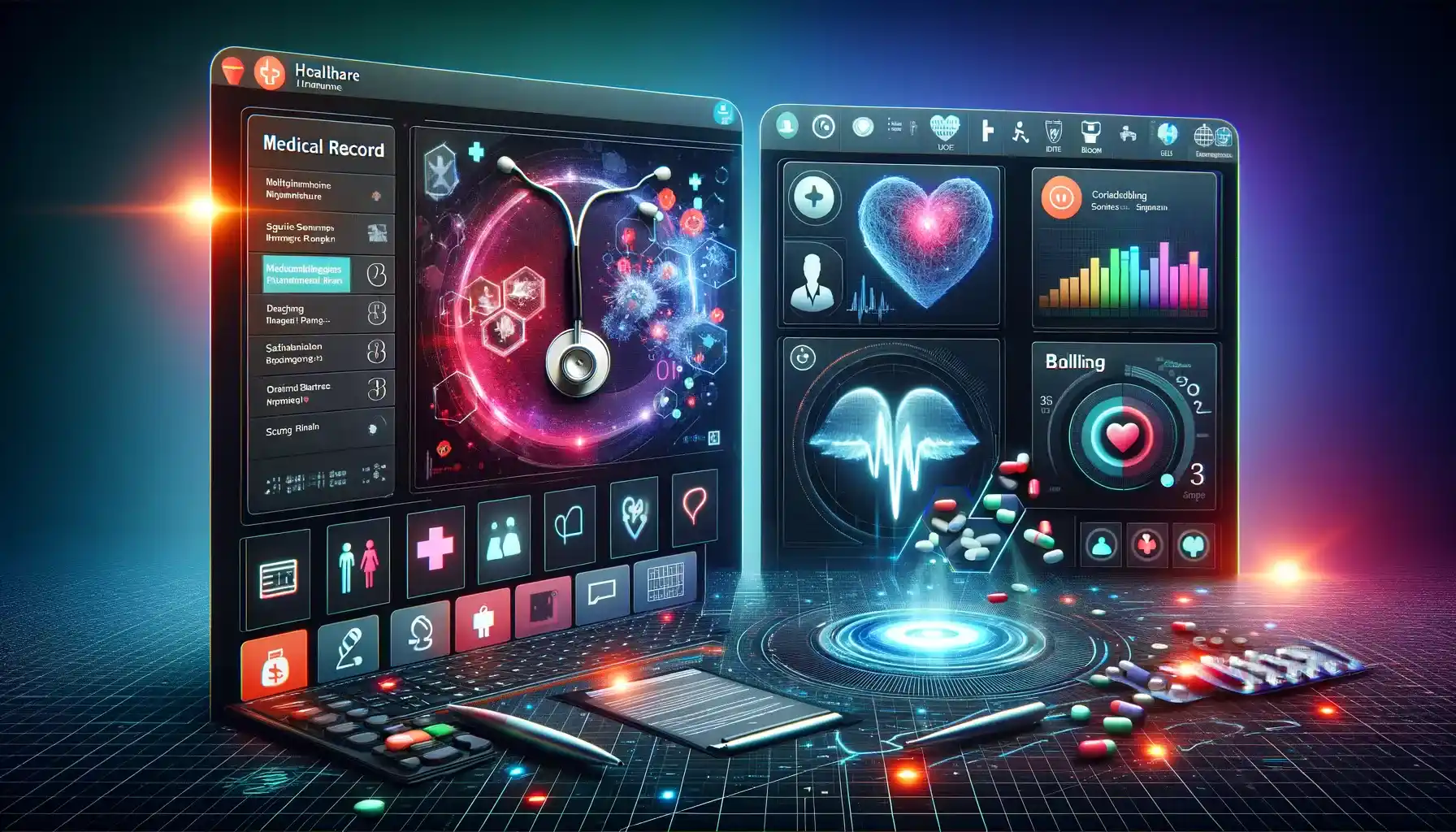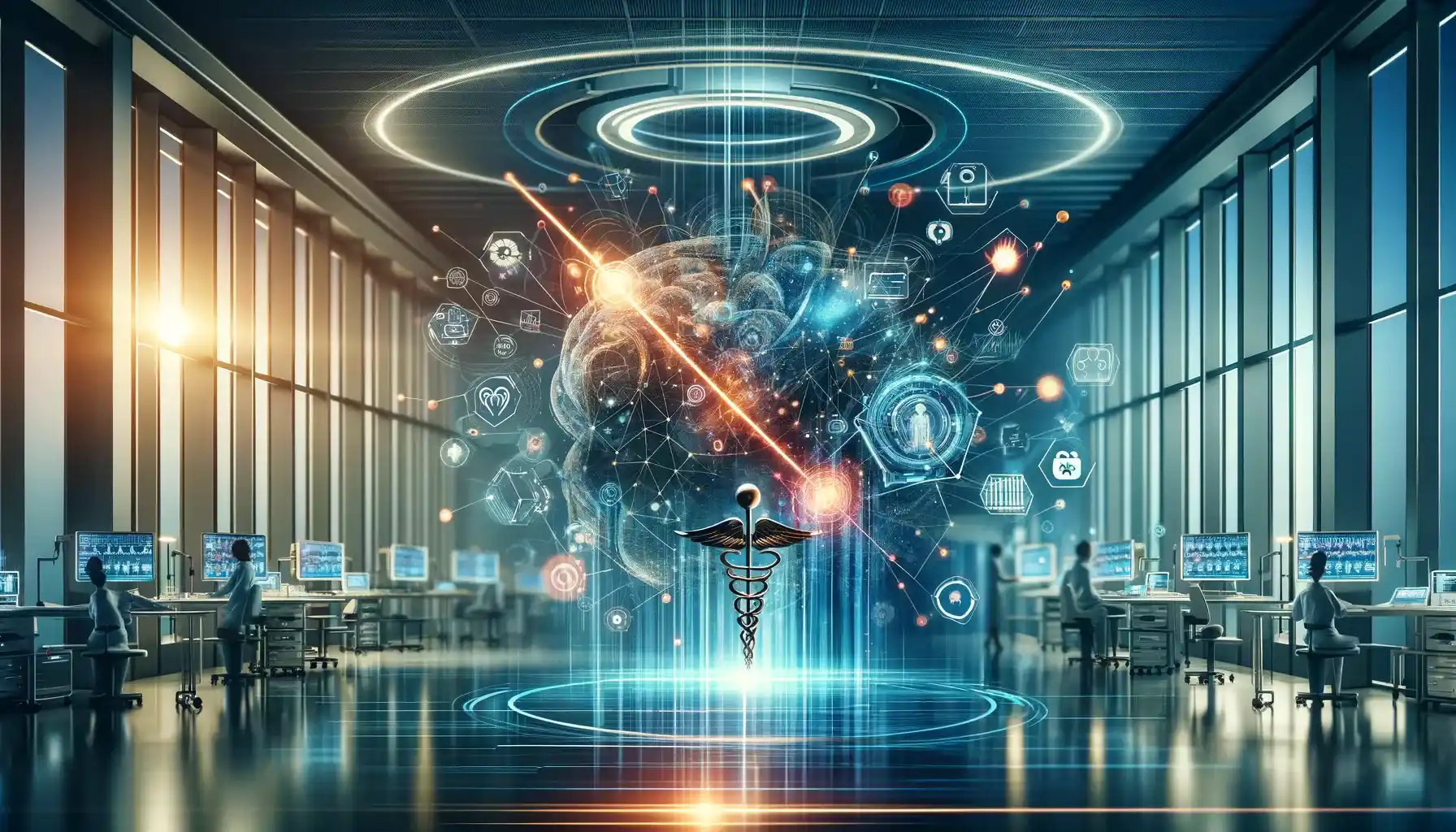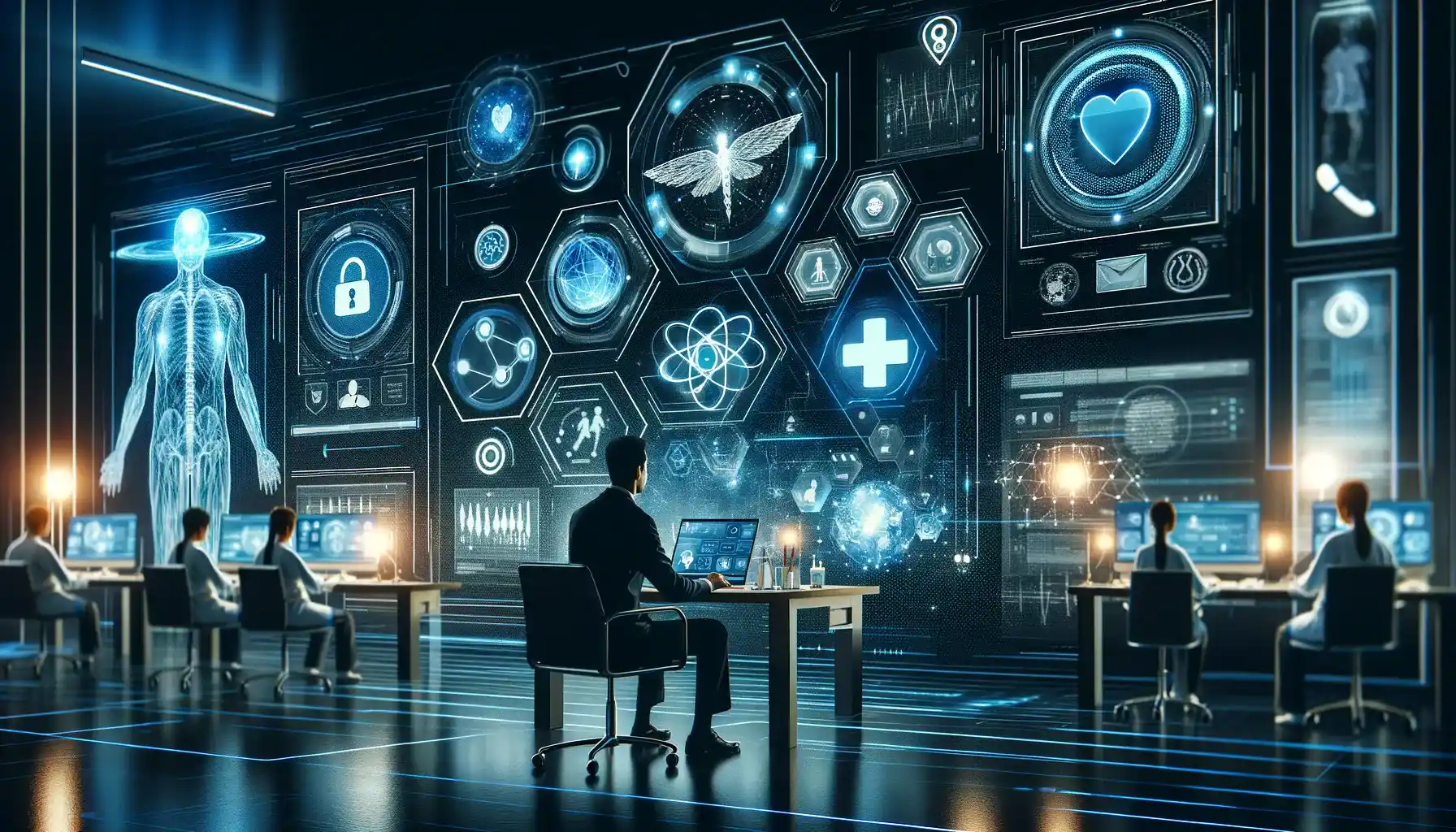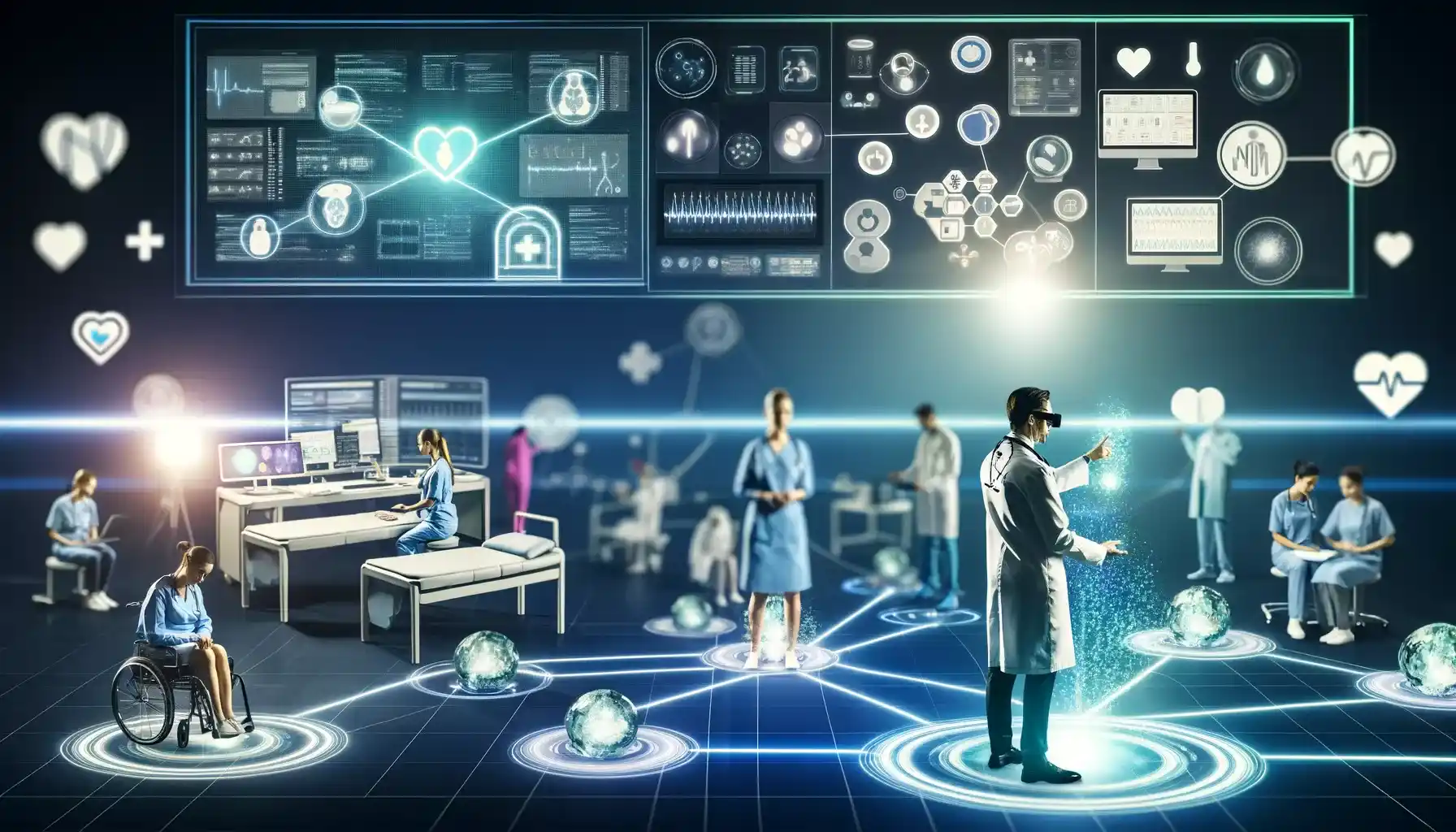Table of Contents
In the fast-evolving landscape of healthcare, technology plays a pivotal role in enhancing patient care, optimizing workflows, and improving overall efficiency. As we look ahead, several emerging tech trends are poised to shape the future of healthcare software.
What is a Healthcare Software?
Healthcare software refers to any computer program or application specifically designed to streamline and enhance various aspects of healthcare delivery, including patient management, medical records, billing, scheduling, and clinical decision-making. These software solutions aim to improve efficiency, accuracy, and accessibility in healthcare settings, ultimately benefiting patients, healthcare providers, and administrators.
5 Emerging Healthcare Software Tech Trends

Let’s explore five of these trends that hold promise for transforming the industry:
1. Artificial Intelligence (AI) and Machine Learning (ML) in Healthcare
Recent research by Morgan Stanley projects a significant increase in healthcare software spending on artificial intelligence and machine learning, expected to surpass 10.5% in 2024, up from 5.5% in 2022. The expanding role of AI in healthcare spans from improving patient communication to aiding surgeries and innovating pharmaceuticals. Let’s delve into specific AI use cases to understand their transformative potential in healthcare.
Artificial intelligence (AI) and machine learning (ML) are revolutionizing healthcare software by analyzing large volumes of patient data to identify patterns and make predictions. For instance, AI algorithms can analyze medical images to assist in diagnosing diseases like cancer more accurately and quickly than traditional methods. ML can also help personalize treatment plans by analyzing patient data to determine the most effective interventions based on individual characteristics. Additionally, predictive analytics powered by AI can forecast disease outbreaks and optimize hospital resource allocation. Overall, AI and ML in healthcare hold promise for improving patient outcomes and reducing costs through more efficient and personalized care.
2. Telemedicine and Remote Patient Monitoring
Telemedicine platforms enable patients to consult with healthcare providers remotely through video calls, phone calls, or secure messaging. One instance is Teladoc Health, which offers virtual visits with board-certified physicians for various medical concerns, from minor illnesses to chronic conditions.
Remote patient monitoring solutions utilize wearable devices or sensors to collect and transmit patient data, such as vital signs or glucose levels, to healthcare providers for analysis and intervention. For instance, the Apple Watch with its health monitoring features allows users to track their heart rate, detect irregular rhythms, and even perform an electrocardiogram (ECG) recording, providing valuable insights for both users and their healthcare providers.

These technologies are revolutionizing healthcare by expanding access to medical services, particularly for individuals in rural or remote areas, and improving patient outcomes by enabling proactive management of chronic conditions and early detection of health issues.
The COVID-19 pandemic accelerated the adoption of telehealth, revolutionizing healthcare software delivery worldwide. Telemedicine infrastructure witnessed remarkable enhancements, fueling its popularity across diverse medical specialties such as primary care, mental health, dermatology, and pediatrics.
One perfect example is a recent article penned by Ada’s medical team. Ada has been working hard to improve health outcomes since 2016, it is built by doctors and scientists and powered by a 13 million-strong userbase, their medical AI simplifies healthcare journeys and helps people take care of themselves.
In April 2020, over 43% of Medicare primary care visits utilized telehealth services. While telehealth visits have tapered since the pandemic’s peak, projections from Fortune Business Insights suggest a thriving telemedicine market, anticipated to reach $185.6 billion by 2026.
3. Blockchain Technology for Health Data Management
Blockchain technology is transforming health data management by offering a secure, decentralized platform for storing and sharing sensitive medical information. Through blockchain-enabled healthcare software, patients gain more control over their health data, ensuring privacy and interoperability across various healthcare providers. Instances include electronic health records (EHRs) and supply chain management systems, where blockchain enhances data security, transparency, and integrity in the healthcare sector.
4. Internet of Medical Things (IoMT) and Wearable Devices
The Internet of Medical Things (IoMT) is a network of interconnected medical devices and sensors that gather and transmit health data in real-time. This data is used for monitoring, diagnosing, and treating medical conditions.
For instance, wearable devices like smartwatches and fitness trackers fall under IoMT. They can track vital signs such as heart rate, sleep patterns, and activity levels. This data can help individuals monitor their health and fitness goals.
Additionally, medical sensors embedded in wearable devices or attached to the body can detect abnormalities or changes in health parameters. For instance, a wearable ECG monitor can continuously monitor heart rhythms and alert users or healthcare providers in case of irregularities.

Overall, IoMT empowers individuals to actively manage their health while also providing valuable insights to healthcare professionals for more personalized and timely interventions.
Wearables and IoT technologies are increasingly integrated into our daily lives, with their potential in healthcare growing significantly. In 2020, Internet of Medical Things (IoMT) solutions comprised 30% of the total IoT market, valued at $30.5 billion. By 2022, this figure soared to $144.23 billion, with the market projected to maintain a robust 20.4% CAGR from 2023 to 2030. As the healthcare sector becomes more interconnected through IoT, these technologies play a pivotal role in revolutionizing patient care, clinical monitoring, and operational efficiency.
5. Augmented Reality (AR) and Virtual Reality (VR) in Healthcare
Augmented Reality (AR) and Virtual Reality (VR) are transforming healthcare by providing immersive experiences and innovative solutions for medical education, training, and patient care.
- Medical Education: AR and VR allow medical students to explore detailed anatomical structures in three dimensions. For instance, platforms like HoloLens enable students to visualize and interact with virtual models of the human body, enhancing their understanding of complex anatomy.
- Surgical Training: Surgeons can practice and refine their skills in a virtual environment before performing procedures on real patients. Companies like Osso VR offer surgical training modules that simulate realistic operating room scenarios, helping surgeons hone their techniques and reduce the risk of errors.
- Patient Care: AR and VR are used to improve patient outcomes and experiences. For instance, VR-based distraction therapy is used to alleviate pain and anxiety during medical procedures. Companies like AppliedVR develop immersive experiences that transport patients to relaxing environments, reducing the need for sedatives and pain medications.
- Rehabilitation: VR is utilized for physical and cognitive rehabilitation. Patients recovering from injuries or surgeries can engage in virtual exercises and activities that promote movement and brain stimulation. Projects like MindMotion GO offer VR-based rehabilitation programs for stroke patients to regain motor functions and improve cognitive abilities.

Extended reality (XR), encompassing augmented reality (AR), virtual reality (VR), and mixed reality (MR), holds immense promise for revolutionizing the healthcare industry. From aiding in surgical procedures to enhancing telehealth applications, XR technologies offer innovative solutions that can significantly improve patient care and outcomes.
By leveraging AR and VR technologies effectively, healthcare providers can optimize workflows, enhance medical training, and ultimately transform the way healthcare services are delivered.
Embracing Transformative Technologies in Healthcare Software
The future of healthcare software is promising, thanks to transformative technologies like artificial intelligence, telemedicine, blockchain, and augmented reality. These advancements are revolutionizing healthcare by enhancing patient care, streamlining clinical workflows, and fostering innovation across the industry.
Embracing these technologies enables healthcare organizations to stay ahead in the rapidly evolving healthcare landscape while optimizing efficiency and improving outcomes for patients.
FAQs
Q. How to create medical software?
Creating medical software involves several key steps, including identifying requirements, designing the software architecture, developing the application, testing it rigorously, ensuring regulatory compliance, deploying it in healthcare environments, and providing ongoing maintenance and support.
Q. What is the software development life cycle in healthcare?
The software development life cycle (SDLC) in healthcare encompasses phases such as planning, analysis, design, implementation, testing, deployment, and maintenance. Each phase involves specific activities and tasks tailored to the unique requirements and regulatory considerations of healthcare software development.
Q. How to build a healthcare platform?
Building a healthcare platform requires careful planning, collaboration with stakeholders, adherence to regulatory requirements, and leveraging appropriate technologies such as cloud computing, interoperability standards, and security protocols. Key steps include defining the platform’s objectives, designing its architecture, developing core functionalities, integrating with existing systems, testing for usability and security, and deploying the platform for use.